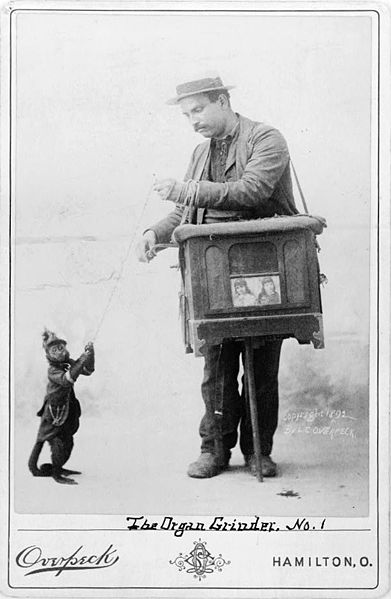Trivia question for Oct-31-2011
Happy Halloween Everyone.
Carter looked for a species which might have a perfect face for a halloween edition of our OMG Trivia and this is what he came up with. These are vocal residents of rainforests in South America, frequently found in marauding troops. When presented with a reflection, these monkeys react in a way that indicates an intermediate state between seeing the mirror as another individual and recognizing the image as self.
Most animals react to seeing their reflection as if encountering another individual they don’t recognize. An experiment with these monkeys shows that they react to a reflection as a strange phenomenon, but not as if seeing a strange member of their own species.
Like most New World monkeys, these guys are awake during the day and sleep at night. With the exception of a midday nap, they spend their entire day searching for food. At night they sleep in the trees, wedged between branches. They are undemanding regarding their habitat and can thus be found in many differing areas. Potential predators include jaguars, cougars, jaguarundis, coyotes, tayras, snakes, crocodiles, and raptors. One of the main predators of some of these species is the Harpy Eagle, which has been seen bringing several of these poor guys back to its nest.
So here are Carter’s questions: Tell us what type of monkey this is and tell us how they got their name? Also, these guys used to be a common sight in American cities because their owners used to make them do tricks. Tell us what was the most common trick these guys are known for?
Good Luck 😉
Answer:
Congratulations goes out to Robert Yukon Joe Fenton from Winter Park FL for getting all of our trivia correct. The mischievous monkey we featured is the Capuchin Monkey. The capuchins are New World monkeys of the genus Cebus. The range of capuchin monkeys includes Central America and South America as far south as northern Argentina.
The word capuchin derives from a group of friars named the Order of Friars Minor Capuchin, an offshoot from the Franciscans, who wear brown robes with large hoods covering their heads. When explorers reached the Americas in the 15th century they found small monkeys who resembled these friars and named them capuchins.
Easily recognized as the “organ grinder” or “greyhound jockey” monkeys, capuchins are sometimes kept as exotic pets. They are also used as service animals, sometimes being called “nature’s butlers.” Some organizations have been training capuchin monkeys to assist quadriplegics as monkey helpers in a manner similar to mobility assistance dogs. After being socialized in a human home as infants, the monkeys undergo extensive training before being placed with a quadriplegic. Around the house, the monkeys help out by doing tasks including microwaving food, washing the quadriplegic’s face, and opening drink bottles. Here is more on these playful little guys: Capuchin Monkey
Thanks for playing along 😉

